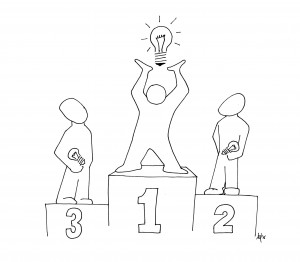When people with a severe mental illness are going through a crisis, for example when they are having a psychosis, or are threatening to harm themselves or others, they are in acute need for help. In these situations they usually receive support from many different people, including their carers, police, ambulance, emergency departments, social workers and mental health units. Currently there are many problems within this complex crisis response system. For example, signs of distress are often detected too late, being transported to the hospital and staying in the emergency department can be very traumatic experiences for people with a mental illness, and there are often conflicts between service providers about responsibilities.
This is exactly the kind of complex societal problem we like to address through our design innovation methods. At first sight the fields of mental health emergencies and design might not seem to be related at all. Severe mental illness is a very serious problem and is design not some kind of fun and creative activity used to create things like fashion, iPhones and cars? The latter is indeed true, but there is increasing evidence that the way designers think is also beneficial outside this traditional design domain. This is called design innovation or design thinking. This means that design methods are not only used to design things and products, but also to design services, processes and policies.
One of the principles of design thinking is that to be able to generate innovative solutions designers need to gain a deep understanding of the problem. However, the process of translating these insights into solutions is often presented as rather mysterious and dependent on the ingenuity of designers. In this blog I will show how the frame creation methodology developed by Kees Dorst unveils this mystery by providing a clear method to move from insights to solutions, and how it helped us generate a very promising solution to support people with a severe mental illness who are in acute need for help.
Read More

